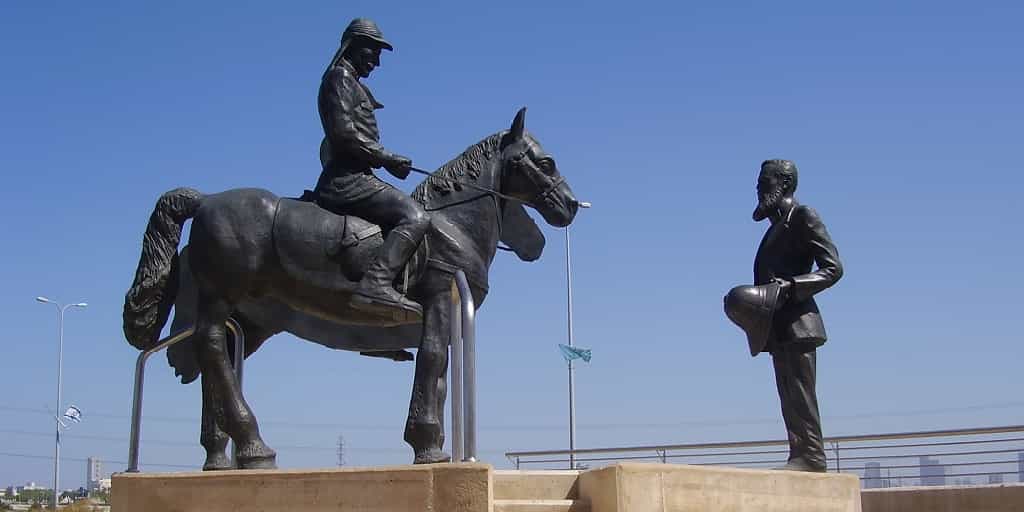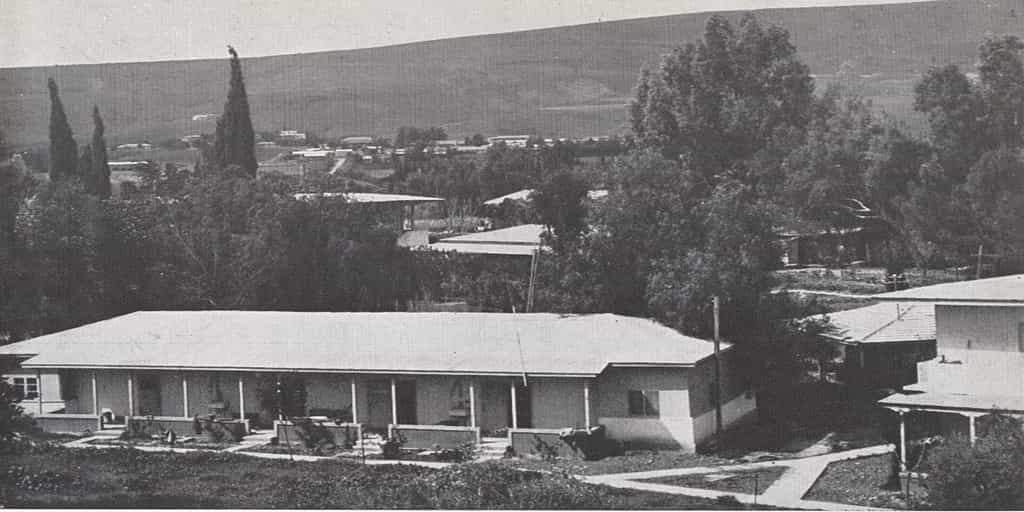Before the State of Israel was born, there were five major waves of Jewish immigration to the land. Each wave of immigration is called an aliyah. The 1st Aliyah lasted from 1882 to 1902. The Third, Fourth, and Fifth Aliyot are on the way. The Second Aliyah to Israel lasts from 1904 to 1914. It is one of great state building and excitement.
Background
The Second Aliyah began in 1904. The Kishinev Pogroms in 1903 encouraged immigration to Israel. These pogroms were so violent and so traumatic, poet Haim Bialik wrote about the atrocities that occurred.
The death of a Mr. Theodor Benjamin Herzl further promoted the Second Aliya to Israel. Theodor Herzl was the leader of Political Zionism. In 1894, he was a young journalist covering the story of a Jewish officer in the French army, named Alfred Dreyfus. Dreyfus was falsely convicted of treason. The crowds around the courthouse shouted “Death to the Jews!” when he was sentence to exile.
Theodor Herzl was shocked to see this happen. He thought that after emancipation in Western Europe, this event could not have happened. He decided that the only way we can make sure that anti-Semitism is stopped is by creating a Jewish State. So on that basis he travelled across Europe bringing together Zionist communities, talking to political leaders, publishing works, and more.

Ten years later, in 1904, Theodor Benjamin Herzl passed away. The international Zionist community he created decided to continue his legacy by coming to Israel.
At the same time the Russians lost the Russo- Japanese War. In 1905, 2000 Jews died in the War. When the following revolutions ended, co-patriots blamed the failures on Jewish Russians. Massive numbers of Jews left for the U.S. and Israel.
All of these events brought thousands of Jews to the land.
What makes the Second Aliyah different
Many of those who make Aliyah were young men from the middle- class. Although raised religious, these men were secular, and some even became political radicals. And they came with very different ideas of what should happen.
The immigrants of the Second Aliyah were socialist, or labor, Zionists. In their perspective workers were going to build the country up. As a result, they had several demands:
- Socialist values within the economy
- Jewish workers hired
- Specific hours for workers
- Time to rest
Soon these demands created tensions between those of the First Aliyah and the Second Aliyah to Israel.
By the beginning of World War I and the end of the 2nd Aliyah, there were 85,000 Jews living here. In 1895, there were twenty-five Jewish towns, but by 1914 there were forty-four.
During this aliyah, pioneers laid down the roots of the Kibbutz. It was called a kvutza, not a kibbutz.

The Founding of Tel Aviv
In 1905 Gymnasia Herziliya becomes the first school to teach in Hebrew. The school was the first building moved and built in the new city of Tel Aviv. The builders designed the facade like a synagogue to emphasize the importance of education. Two years after the Second Aliyah began, a follower of Theodor Herzl, named Ariyeh Akiva Weiss presented a special idea. He proposed to create a modern, all Jewish, all Hebrew speaking city. Individually, these aspects may not be unique, but together it creates something very unique.
Three years later, in 1909, sixty- six families came to the land they bought and built Tel Aviv. And in 107 years, the founders of Tel Aviv created the second largest city in the country, the cultural capital o the country, and its economic center. That is especially incredible in comparison to the age of other cities in the region.
What happens in Palestine during the Second Aliyah to Israel
Meanwhile, the year before Tel Aviv is established, 1908, Dr. Arthur Ruppin began to buy and settle land in Palestine on behalf of Jewish organization. He put his office in Jaffa, but bought land in the northern valleys of Palestine. Until Ruppin began his work, most of the Jews who moved lived in towns and cities.
And with the land that Ruppin bought, Jewish immigrants and residents began to farm the land and turn the Galilee green. They established a kvutza, or a group that shared all products, profits, and tools. As a farming collective, they had to first drain swamps in the north. It was very hard work. The mosquitos carried malaria. Many got sick and died.
But the Second Aliyah to Israel wasn’t just one of building.It wasn’t just one of turning the Galilee green. It was a political one. In 1911, a health care system was established. Political figures established political parties with an equal vote, and journalists published party newspapers. The political parties we see today in Israel are descendants of the political parties from the Second Aliyah. Workers merged together a Labor Union. Today’s Bank Leumi was the Anglo Palestine Bank by the World Zionist Organization (WZO). A German Zionist organization Ezra established the Technion as a high school (today it is a leading science university in Israel).
All in all, it was a time of great state building and preparing for creating a modern Jewish state. But that state building slowed with the outbreak of World War I in July 1914.
Great Britain and France divided the Middle East into Mandates after the War ended. Palestine was given as a Mandate to the British. In 1917, Lord Balfour publishes the Balfour Declaration. It is an important documenting supporting the creation of a Jewish State.

Conclusion: Why the Second Aliyah to Israel is important
In conclusion, the Second Aliyah is essential to understand because it was time when the leaders begin state building and taking the idea of creating a Jewish state seriously. Leaders will be born during this time. A sense of nationhood really comes alive.
The Second Aliyah created the workers union existent today, in addition to its bank, known today as Bank HaPoalim. Israel’s present agricultural scene wouldn’t be flourishing. The immigrants to the Land planted the foundations of modern Israel at this time. When Israel does become a modern, independent state in 1948, it is really with all of the institutions and plans that begin at this time. Therefore, the people of the Second Aliyah changed the landscape of Palestine! Finally, they were dedicated to their dream, and did everything they could make it happen.
When we understand the Second Aliyah to Israel, we understand the roots of modern Israel.





